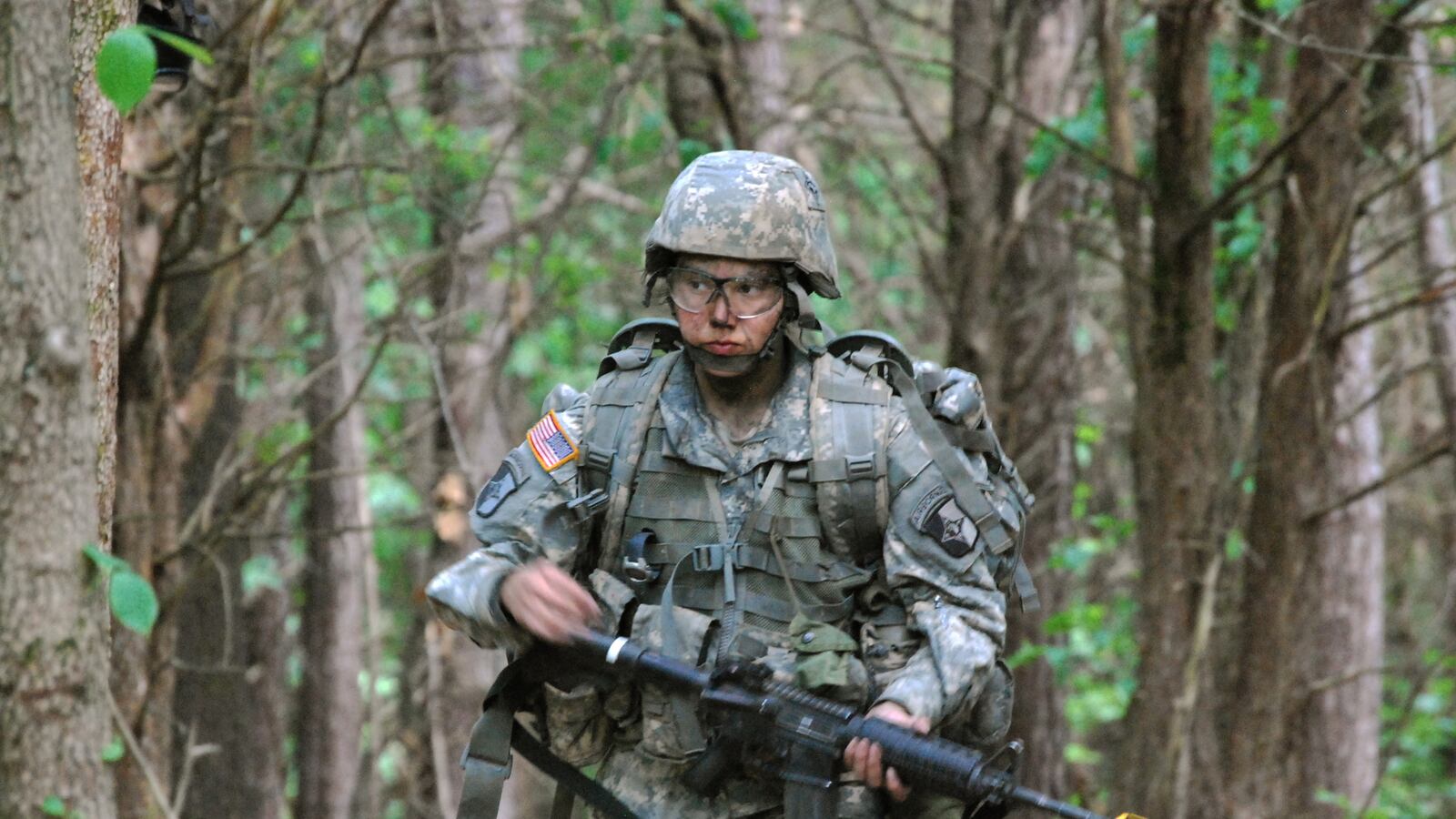Women in combat. Those once were fighting words, fodder for the culture wars. Now it’s an idea whose time has come. With unanimous support from the Joint Chiefs, Defense Secretary Leon Panetta will announce at a press conference Thursday at the Pentagon that he is ordering the ban lifted against women serving in combat positions.

“This is a landmark shift in the U.S. military, a paradigm shift,” says a senior defense official, “because we are now in theory, potentially, opening up every single position in the U.S. military to women.” Not tomorrow, he cautions, but by Jan. 1, 2016, with the onus on the services to implement the change, or to justify to the secretary why they can’t—a shift in the burden of proof that should hasten the transition.
Given the history of emotional opposition to women serving in combat, it is remarkable how little pushback there appears to be. Panetta conferred over a period of months with the Joint Chiefs of Staff both in his office and in the Tank, the secure room at the Pentagon where the Joint Chiefs meet, where it became increasingly obvious that lifting the ban was not only the right thing to do, but also would likely encounter little resistance. The senior defense official said, “The analog is DADT,” the lifting of the ban against gay men and women serving openly in the military.
“There was a chop in the water, but everyone came on board. We expect this to go well, and the difference is that at the senior levels, there is no chop,” he said, anticipating smooth sailing given the unanimity among the Joint Chiefs.
Panetta’s decision comes amid a lawsuit filed by four female veterans, along with the ACLU, demanding that women be allowed in combat. The suit argues that the combat exclusion is outdated, unfair, based on stereotypes, and ignores what’s actually happening on the modern battlefield.
Members of the Senate Armed Services committee learned only Wednesday of the impending rule change. Democrat Jack Reed, a West Point graduate and former Army Ranger, applauded the news, telling The Daily Beast, “The reality is that anyone in a uniform in a war zone is in combat. This is recognizing the reality of warfare today and the tremendous contribution women make.” The Pentagon’s three-year timeline for implementation “seems reasonable, allowing for practical feedback,” he said.
The nature of warfare in Iraq and Afghanistan helped force the recognition of women as equal partners. Women are not “assigned” to combat units; they are “attached,” a meaningless distinction when you’re fighting counter-insurgency warfare, says Lawrence Korb, a Pentagon official during the Reagan administration who is now with the liberal think tank Center for American Progress. “Once we went to war in Iraq and Afghanistan, they’re right out there attached—the enemy doesn’t make a distinction; neither should we.”
The Pentagon says 139 servicewomen have died in Iraq and Afghanistan; many more have been wounded.
Panetta visited Afghanistan four times in the past 18 months and saw first-hand the women on the front lines supporting combat missions. “He’s often asked himself, if women have this kind of experience, why are we closing off certain roles to them? That doesn’t seem to make sense,” says the senior defense official familiar with Panetta’s thinking.
While word of Panetta’s planned announcement sent shock waves through Washington, the military has been inching toward this moment for some time. In February of last year, following a review with the service chiefs, Panetta opened up 15,000 positions to women. The move he announces on Thursday will open up tens of thousands of additional jobs, allowing women to compete for higher positions and promotions previously denied them.
Some jobs may be harder for women to achieve. For example, special-operations units, elite groups like the Delta Force, are highly competitive to begin with, and have super-tough physical requirements. Still, a defense official says, “We are not at all saying no to that possibility” of women at every level, including at some point in the not-too-distant future a woman service chief who would become the first to take her place among the Joint Chiefs.
The transformation began with the first Gulf War in 1991 when women for the first time flew combat missions. For the next breakthrough, women were allowed on ships, with the exception of submarines. In September 2009, at the urging of Adm. Michael Mullen, then chairman of the Joint Chiefs, the Navy changed its policy to allow women on submarines. The last piece fell into place when a military commission ordered by Congress and chaired by two retired generals recommended in the spring of 2011 that the policy restricting women be eliminated “to create a level playing field for all qualified service members.” It called for a phased-in approach along the lines of what Panetta initiated a year ago and is now putting front and center.
Early reports from Capitol Hill suggest that Democrats for the most part are ecstatic about the change while Republicans are quiet about it, but seem resigned. “You may have some resistance among traditionalists in the Congress,” says Korb, but they are in the minority, and appear to recognize they’ve lost the debate. What will happen is what happened after gay service members were allowed to serve—nothing, says Korb. The opposition melted away. Even the Marines commandant, who initially feared that repealing DADT would undermine the war effort, now calls the repeal “a non-event.”
Senator Reed says the extent of the change in the military since he once led an all-male paratrooper unit in the 1970s was underscored for him when he boarded a Black Hawk helicopter in the war zone of Mogadishu, Somalia, in 1993. “I saw a young female gunner in the door with a weapon. I couldn’t say anything to her. It’s not like the movies—it was loud, she had on a helmet and a flak jacket. She was competent. I’m glad she was there taking care of us.”
Women have proved themselves on the battlefield, and if lifting the ban on their role in combat proves as non-controversial as its many advocates believe, the world has indeed taken another turn for the better.






